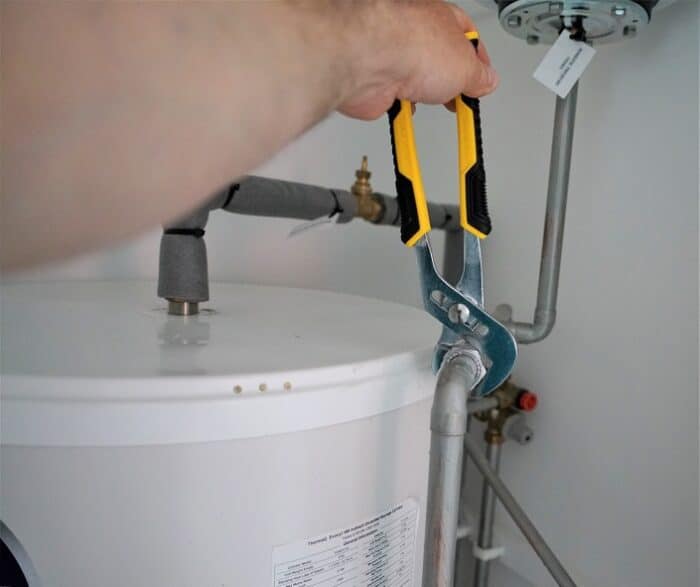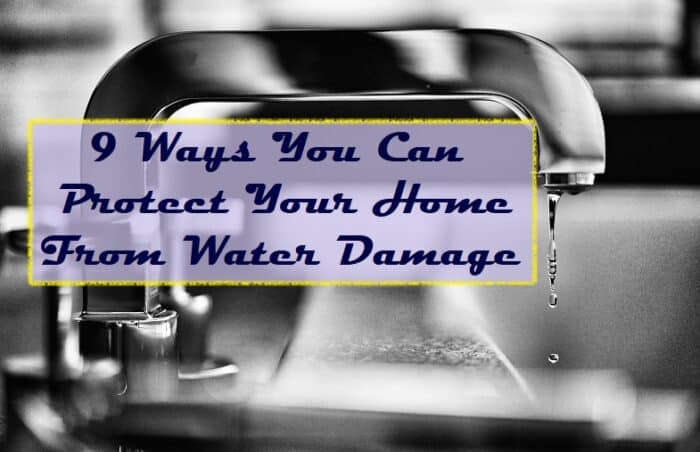Water damage costs homeowners in the United States billions of dollars every year. It is one of the most common forms of homeowners insurance claims and can cause extensive damage to your home and property, from ruining furniture and possessions to causing structural damage to your home. In some cases, it can even lead to health problems for you and your family by fostering the growth of mold and mildew. That’s why it’s essential to take proper steps to protect your home from water damage, and luckily, there are many effective ways to do that. Here are 9 most important ones:
Check Your Gutters and Downspouts Regularly
One of the best ways to protect your home from water damage is to make sure that your gutters and downspouts are clean and functioning properly. Tese is designed to channel water away from your home, so it’s important that they are clear of debris and not clogged in any way. When leaves, twigs, and other debris build up in your gutters, it can block the flow of water and cause it to back up onto your roof or overflow onto your property. This can lead to serious damage to your home’s structure and foundation. To avoid this, be sure to clean your gutters at least once a year, and more often if you live in an area with a lot of trees. Even though you can do this yourself, it might be a good idea to hire a professional to do it for you to be sure it’s done properly.
Have a Good Insurance Policy
No matter how well you protect your home, there’s always a chance that something could happen that would cause water damage. That’s why it’s important to have a good insurance policy in place that will cover the cost of repairs if your home does suffer water damage. Homeowners’ insurance policies typically cover water damage caused by plumbing leaks, storms, and other events. On the other hand, renters’ insurance policies often cover only water damage caused by plumbing leaks and usually exclude damage caused by storms. So, if you’re a renter, ask if your landlord does renters insurance cover water damage and what type of coverage you have. In case it doesn’t, you may consider purchasing an additional policy so you can have peace of mind knowing you are fully protected.
Inspect Your Roof Regularly
Your roof is exposed to the elements 24/7, so it’s no surprise that it can develop leaks and other problems over time. From high winds and hail to falling trees and branches, many things can damage your roof and cause water to leak into your home. That’s why it’s important to inspect your roof regularly for any signs of damage, such as missing or damaged shingles, cracks, or leaks. If you do find any damage, be sure to have it repaired as soon as possible by a professional to avoid further damage to your home. However, even if you don’t find any damage, it’s still a good idea to have your roof inspected by a professional at least once a year. Many times, leaks can develop without any visible signs, so it’s best to be safe and have someone take a look.

Inspect Your Plumbing Regularly
Depending on the type of plumbing pipes and fixtures you have in your home, they can develop leaks and other problems over time. The most common type of plumbing pipe, copper, can corrode and develop leaks, while galvanized steel pipes can rust and become clogged more easily. If you have any old or outdated plumbing fixtures, such as toilets, showers, or sinks, they might also be more likely to cause problems, so it’s a good idea to have them checked by a professional as well. Additionally, if you know where your main water shut-off valve is located, it’s a good idea to check it regularly to make sure it’s working properly. In the event of a plumbing leak, you can use this valve to quickly shut off the water to your home and prevent further damage.
Use a Sump Pump
A sump pump is a device that is installed in the lowest part of your basement or crawlspace that helps to remove water that has accumulated there. This is especially useful in homes that are located in flood-prone areas or have poor drainage. The sump pump works by pumps water out of the basement or crawlspace and into a drain or storm sewer. This helps to keep your home dry and prevents water damage. Depending on the size of your basement or crawlspace, you might need more than one sump pump to effectively remove water. However, a sump pump installation is a fairly straightforward process, so it’s something you can do yourself if you’re handy. However, if you’re not confident in your ability to do it, you can always hire a professional to do it for you.
Install Backflow Preventers
Backflow preventers are devices that are installed in your home’s plumbing system that help to prevent dirty water from flowing back into your home. This is especially important if you have a well, as it can help to keep contaminants out of your water supply. Backflow preventers work by creating a barrier between your home’s plumbing and the municipal water supply. This barrier allows water to flow out of your home but not back in. Backflow preventers are required by law in many areas, so be sure to check with your local building codes before installing one. However, even if they’re not required, they’re still a good idea to have as an extra layer of protection for your home.
Use Water-Resistant Materials
When you’re doing any type of home renovation or improvement project, it’s a good idea to use water-resistant materials. This is especially true in areas of your home that are more susceptible to water damage, such as the kitchen, bathroom, and laundry room. There are several different water-resistant materials you can use, such as tile, laminate, and vinyl flooring. These materials are much less likely to be damaged by water than traditional materials like carpets or hardwood. Additionally, when you’re painting or doing any other type of finish work in your home, be sure to use a waterproof sealant to protect the surfaces from moisture.
Store Hazardous Materials Properly
There are several household chemicals and other materials that can be very dangerous if they come into contact with water. These include bleach, ammonia, paint thinners, and pool chemicals. It’s important to store these materials in a dry, well-ventilated area away from any potential sources of water. Additionally, be sure to keep them in their original containers with the labels intact so you can easily identify them. And, if you have any old or unused hazardous materials, be sure to dispose of them properly so they don’t pose a risk to your home or the environment. The best way to do this is to take them to a local hazardous waste disposal facility.

Monitor Your Water Bill
One of the most common signs of a hidden water leak is an unexpectedly high water bill. If you notice a sharp increase in your water usage, it’s a good idea to investigate to see if there’s a leak. Start by checking all of your home’s plumbing fixtures and appliances to see if they are working properly. If everything seems to be in working order, then the next step is to contact your local water utility company. They can help you determine if there is a leak on your property and, if so, how to fix it.
Even though water damage is one of the most common and costly problems faced by homeowners, by following the tips above, you can minimize the risk of it happening to you. With a little bit of prevention and some quick action, you can protect your home from water damage and save yourself a lot of time, money, and hassle.

